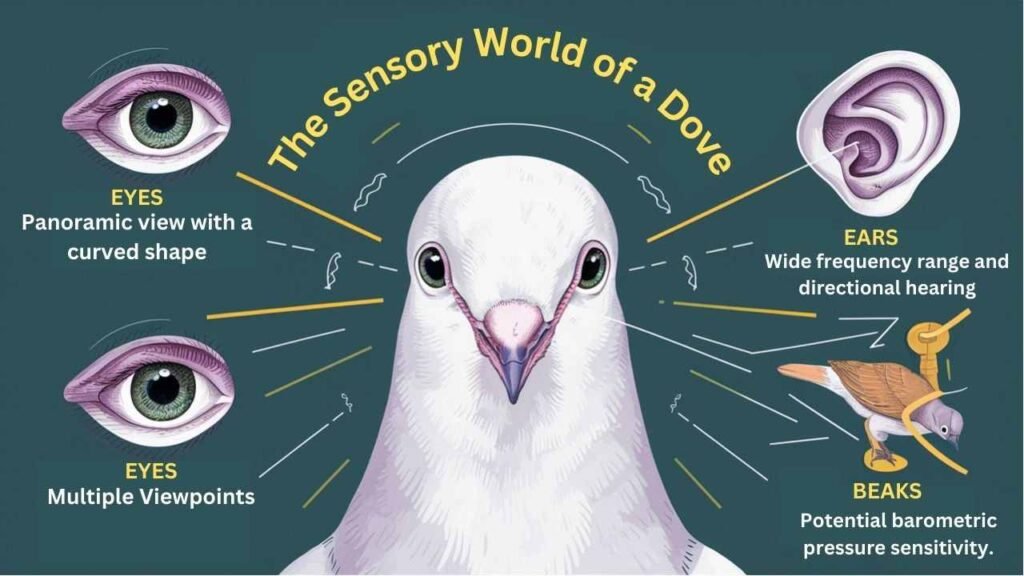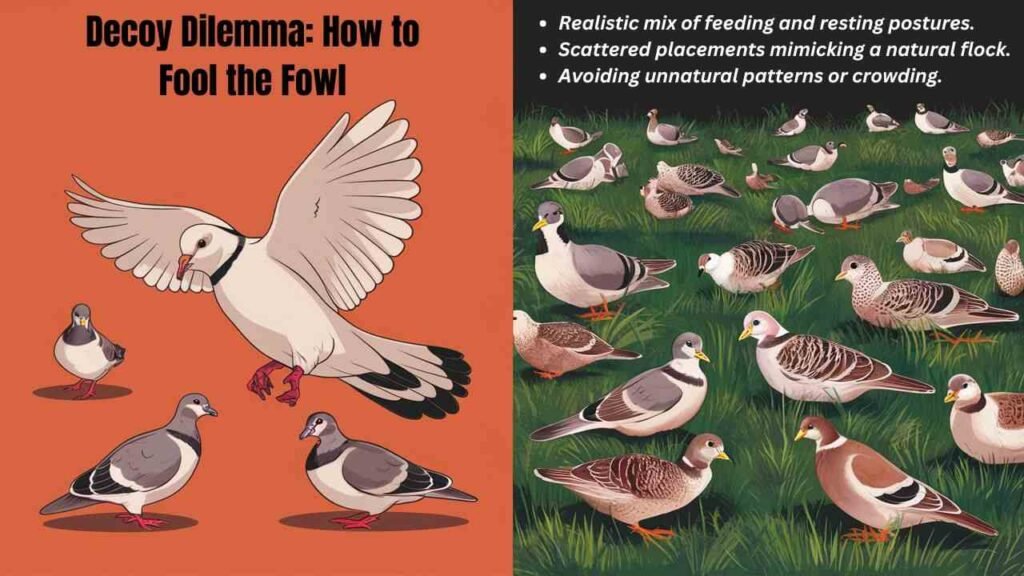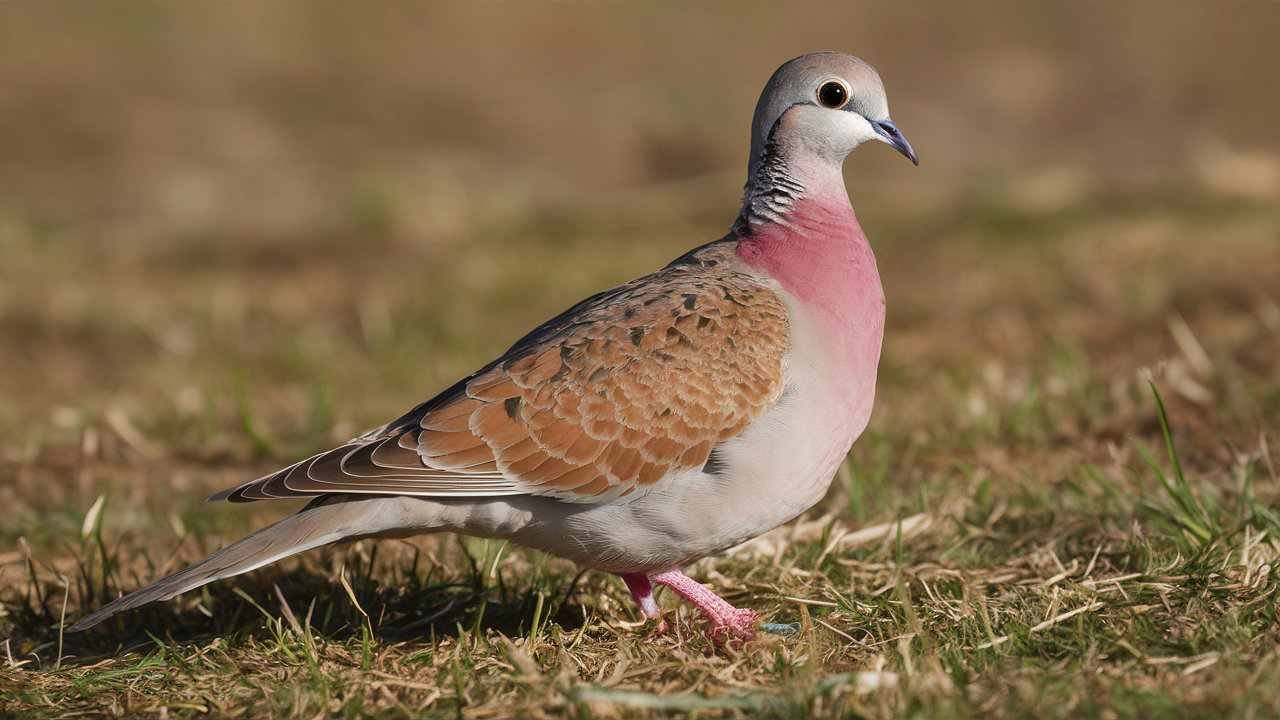Chasing doves has always tested hunters due to their speed and sharp senses. These birds are escape artists, using their fine-tuned vision, outstanding hearing, and knack for sensing threats. Grasping how doves use these senses to escape hunters is key to improving your hunting skills.
This simple, yet detailed guide dives into dove hunting. It looks at how sharp these smart birds’ senses are. It also gives you tips and plans to outsmart them.
Masters of the Skies: Understanding Dove Vision
Doves have fantastic vision, way better than ours. Their eyes sit on the sides of their heads, letting them see almost everything around them. They can spot the tiniest movement from far away. This means hunters need to stay quiet and hidden.
Here’s a deeper dive into the specifics of dove vision:
- Monocular Vision: Doves see differently from us humans. They have single-eye vision, so each eye sees a slightly off picture. But this gives them a huge viewing range. It’s perfect for seeing any threats and moving about their surroundings.
- Sharp Color Perception: Doves have a knack for distinguishing an extensive variety of colors, even more so than people. Specifically, greens and browns really pop for them, making them experts at hiding among leafy surroundings.
- Exceptional Depth Perception: Doves have a superb ability to gauge depth, which allows them to fly and search for food effectively. This means tricky tactics like using unrealistic or misplaced decoys often fail to deceive them.
Dove Visual Acuity Compared to Humans
| Feature | Doves | Humans |
|---|---|---|
| Field of View | Near-panoramic (almost 360 degrees) | Approximately 180 degrees |
| Color Perception | Wider range, particularly sensitive to greens and browns | Good color vision, but less sensitive to certain colors |
| Depth Perception | Excellent | Good |
| Vision Type | Monocular (each eye sees a slightly different image) | Binocular (eyes see a combined image) |
A Hunter’s Worst Nightmare: The Acute Hearing of Doves
Doves are exceptional listeners. They can hear super quiet noises. Their ears are built for hearing high-pitched sounds, like leaves rustling or a twig breaking far away. So, hunters need to be quiet and lessen their sounds during their hunt.
Here are some key aspects of dove hearing to consider:
- Broad Frequency Range: Doves can detect sounds across a wider frequency range than humans. They are particularly attuned to high-pitched noises, which can easily alert them to danger.
- Directional Hearing: Doves have excellent directional hearing, which let them detect a noise’s origin with high precision. This makes surprising them quite the challenge.
- Quick Reaction: Doves can react sharply to unexpected sounds. Even a slight noise can provoke a sudden flight, spoiling your chance of a successful hunt.
Dove Hearing Capabilities
| Feature | Description | Impact on Hunting |
|---|---|---|
| Frequency Range | Detects a wider range of sounds than humans, especially high-pitched noises | Doves can be startled by sounds we may not perceive. |
| Directional Hearing | Excellent ability to pinpoint the source of a sound | Makes sneaking up on doves difficult. |
| Startle Response | Highly sensitive to sudden noises | Even minor sounds can send doves scattering. |
Minimizing Noise During Your Dove Hunt
- Camouflage Clothing: Pick outfits that mix well with your hunting setting. Stay away from loud colors or reflective fabrics that might draw a cautious dove’s attention.
- Careful Movement: Walk with thought and precision to minimize unwanted sound. Utilize what nature offers as concealment and avoid treading on noisy plants.
- Footwear Selection: Pick shoes with soft soles, they’re quiet when you walk.
- Keep Gear Minimal: Leave behind gear you don’t need. It might clang or shake as you walk.
The Sixth Sense? Doves and Their Perception of Danger
Doves are known for having a knack for sniffing out danger, a trait that some might call a “sixth sense.” This sharp alertness is likely a mix of their keen senses and a robust survival instinct. They are smart at noticing tiny signals, like a shift in air pressure or odd actions from other creatures, indicating upcoming threats.

Here’s a breakdown of the factors contributing to a dove’s perception of danger:
- Atmospheric Changes: Pigeons might react to shifts in barometric pressure, signaling looming storms or weather shifts. They might become active or refuse to fly in reaction to these shifts.
- Predator Behavior: Doves are always on alert and good at recognizing threat signals. They’ll probably fly off if they spot a hawk in the sky or catch a whiff of a fox, stepping aside from possible trouble.
- Flock Communication: By using their voices and movements, doves can communicate to each other. When one dove spots trouble, it signals the rest. Then, all the doves in the group take off.
Outsmarting the Dove: Effective Hunting Strategies
Now you know how doves use their senses to dodge hunters. Let’s look at ways to trick them and make your hunting more successful.

Scouting and Choosing the Right Location
- Dove Habitats: Doves like places with plenty of food and water. Look for fields full of grains, seeds, or berries and places with water like ponds or natural springs.
- Flight Patterns: To find out where they eat and drink, pay attention to their flying habits. Try to spot the common routes they use between these spots.
- Natural Cover: Pick a place to hunt that offers good cover like a row of hedges, a pile of brush, or a group of trees. This lets you hide while the doves are feeding or flying above.
Decoys and Calls: Tools for Deception
- Decoy Selection: Utilize dove decoys strategically to attract birds within shooting range. Choose a mix of feeding and resting postures for a more natural look.
- Decoy Placement: Spread out decoys in the field like a real feeding flock. Keep them from unnatural patterns or being too near to each other.
- Dove Calls: Make use of dove sounds minimally and authentically to draw in birds. Mimic the eating noise of a dove to spike their interest and coax them nearer.
Patience and Timing: The Hallmarks of a Successful Dove Hunt
- Early Arrival: Make sure you reach your hunting spot long before the sun comes up or just before it sets. This is when doves are usually moving around and feeding or preparing to roost.
- Remain Still: After picking your location, limit movement as much as possible. Doves can see extremely well, picking up on the smallest movements.
- Selective Shooting: Concentrate on capturing clear images within your best range. Steer clear of far-off shots that could harm the bird or miss completely.
Choosing the Right Shotgun and Ammunition
- Shotgun Selection: For dove hunting, opt for a lightweight 12-gauge or 20-gauge shotgun. The comfort and fit should be spot on. Also, an improved cylinder or modified choke can enhance shot spread for close to medium ranges.
- Ammunition Selection: Go for fast-paced dove rounds with a shot size of 7.5 or 8. These shot measurements bring the right blend of depth and pattern spread for catching doves efficiently.
Dove Hunting Gear Checklist
| Item | Description | Importance |
|---|---|---|
| Camouflage Clothing | Clothing that blends with the hunting environment | Reduces the chance of being spotted by doves. |
| Comfortable Footwear | Soft-soled boots or shoes that minimize noise | Allows for quiet movement through the field. |
| Shotgun | Lightweight 12-gauge or 20-gauge shotgun | Ideal for close- to medium-range dove hunting. |
| Improved Cylinder or Modified Choke | Provides an appropriate shot spread for doves | Optimizes the pattern of your shotgun shells. |
| Dove Decoys (Optional) | Realistic decoys that resemble feeding or resting doves | Can attract doves within shooting range. |
| Dove Calls (Optional) | Tools that mimic the feeding call of a dove | Can be used sparingly to lure doves closer. |
| Hearing Protection | Earplugs or earmuffs | Protects your hearing from the loud noise of gunfire. |
| Eye Protection | Safety glasses | Protects your eyes from debris or stray shot. |
Conclusion: The Thrill of the Challenge
Doves boast panoramic vision, specialized hearing, and amazing danger-detection abilities. If hunters want to beat these smarty birds, they have to be crafty with hiding, using nature, and moving silently. Sly tricks like placing decoys smartly and using soft calls can help trick the cautious doves to come closer. But remember, hunting doves responsibly is about respecting the birds, so always go for clean kills and eco-friendly habits to keep dove hunting fun for everyone, even years from now.

